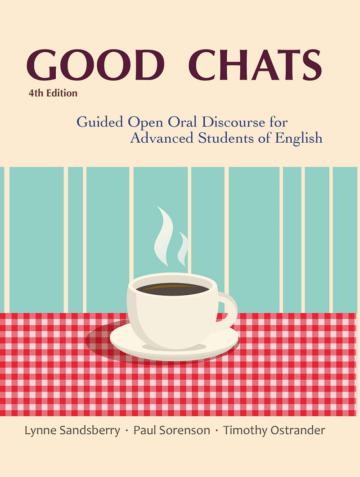GOOD CHATS is a textbook for advanced students of English whose goal is to be able to chat in English about their own ideas. To assist students in meeting this goal, GOOD CHATS has the following features:
a reading passage which is really a showcase for the idioms, turns of phrase, and collocations that native speakers often use when chatting about the given topic
participatory dialogues which both guide students and allow them to express their own ideas, facilitating lively conversations for twos and threes which may be preparatory to a larger class discussion
lists of questions and answers related to the topics; open questions which can help students practice expressions
additional class activities suggestions and an combined audio CD
GOOD CHATS是一本適合中上英語程度學生練習口說的課本,1994年首次出版,24年間再刷、改版數次,在教師與學生間的魅力絲毫不減。獨樹一格的練習方式和道地英語內容有助於在課堂上營造輕鬆、鼓勵學生開口「聊天」的氛圍。14個章節含括14個生活化又有深度的主題,可以激發學生用英語表達意見、和他人溝通的能力。本書特點如下:
每章有一篇短文,內含該主題常用的單字、片語及概念表達方式
短文後有針對該主題的對話模組,學生可模仿其中句型,也能參照該模組自行發展對話內容
第四版新增引導式Q&A示範及開放式問題,進一步練習表達能力
書末有課堂活動可供參考,另附文章朗讀CD一片
| FindBook |
|
有 1 項符合
Timothy Ostrander的圖書 |
 |
$ 238 ~ 252 | Good Chats, 4/e (+1CD)
作者:Lynne Sandsberry,Paul Sorenson,Timothy Ostrander 出版社:Bookman 出版日期:2018-05-24 語言:英文  共 6 筆 → 查價格、看圖書介紹 共 6 筆 → 查價格、看圖書介紹
|
|
|
圖書介紹 - 資料來源:博客來 評分:
圖書名稱:Good Chats (with CD) , 4/e
內容簡介
目錄
Introduction v
Using the Textbook vii
Chapter 1 Sleep 1
Chapter 2 Family 11
Chapter 3 Friends 25
Chapter 4 Dating 37
Chapter 5 Raising Kids 49
Chapter 6 Beauty 63
Chapter 7 Childhood 75
Chapter 8 Sports 87
Chapter 9 Food 99
Chapter 10 Work 111
Chapter 11 Time 123
Chapter 12 Mobile Computing 137
Chapter 13 Money 153
Chapter 14 Values 165
Additional Activities 179
Using the Textbook vii
Chapter 1 Sleep 1
Chapter 2 Family 11
Chapter 3 Friends 25
Chapter 4 Dating 37
Chapter 5 Raising Kids 49
Chapter 6 Beauty 63
Chapter 7 Childhood 75
Chapter 8 Sports 87
Chapter 9 Food 99
Chapter 10 Work 111
Chapter 11 Time 123
Chapter 12 Mobile Computing 137
Chapter 13 Money 153
Chapter 14 Values 165
Additional Activities 179
|











